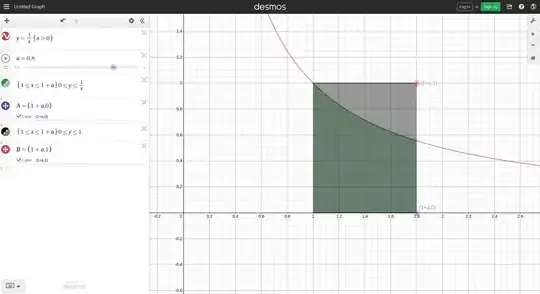I want to prove $\log(1+x) < x.$
Of course, I can prove this by letting $f(x):= x - \log(1+x),$ and calculating $f'(x)$, ... .
But I wonder if I can prove this using Maclaurin's expansion.
$\log(1+x)=x-\dfrac{1}{2}x^2+\dfrac{1}{3} x^3-\cdots.$
The right-hand side includes the term "$x$" so it seems that I can use this equality in order to prove $\log(1+x) < x$, but I cannot.
I would like you to give me some ideas.

